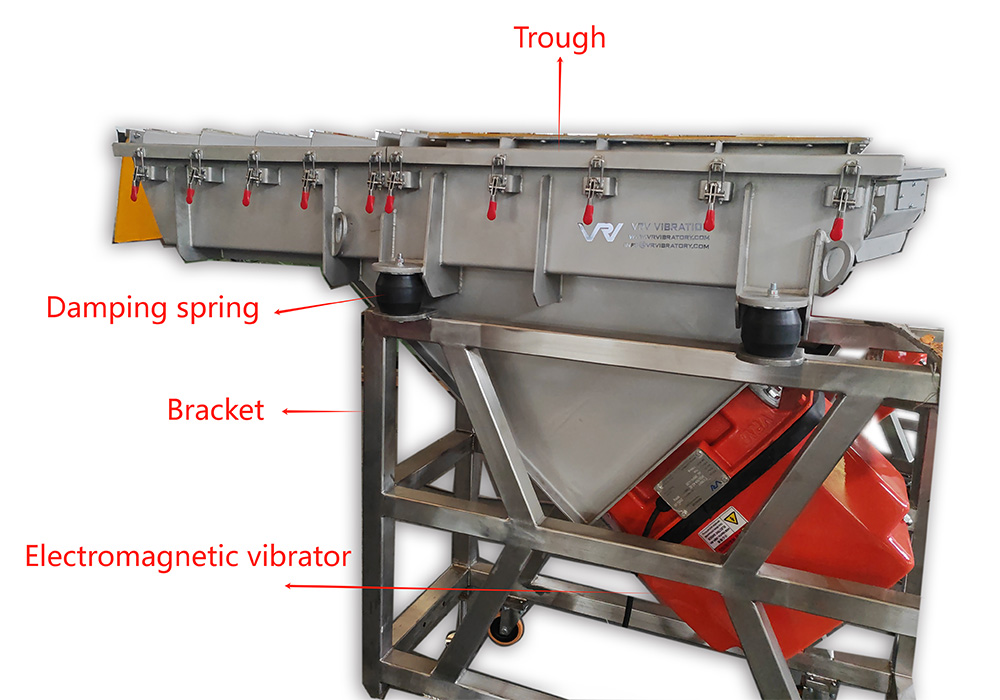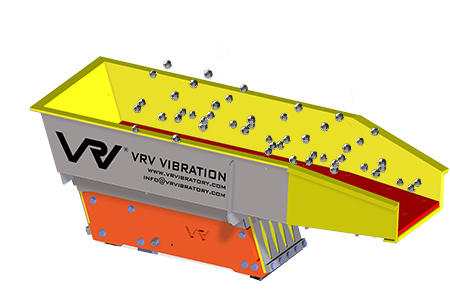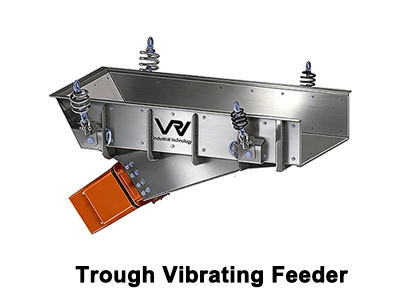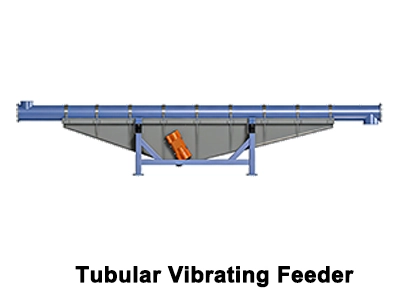
Working principle of vibrating feeder:
A Vibrating Feeder is a conveying system mainly driven by electromagnetic drives or unbalanced motors, used to evenly, quantitatively, and continuously feed materials into designated silos. The working principle is mainly to use the vibration force of the driver to make the guide groove vibrate. The material moves through a controlled linear vibration, resulting in jumping and throwing movements of the material. The continuous reciprocating vibration of the groove allows the material to be evenly and continuously fed into the designated material bin.

In addition, the Electromagnetic vibrating feeder (working principle) also has some characteristics, such as the ability to manually control and adjust the feeding speed according to production and application situations, sensitive electromagnetic response, and can achieve instant stop and start to achieve precise feeding. The feeding is softer, and the damage rate of the feeding product can be reduced by about 50%. Compared with commonly used screw feeders, the feeding amount is larger and more direct, suitable for feeding fragile or irregular materials with large particles. It is usually used for short distance feeding between two equipment, playing a role in filling the connection gap.

Type of vibrating feeders:
According to the shape of the guide groove, vibration feeders can be divided into open, closed, groove, tube, long-distance, etc. to be suitable for different application scenarios. VRV long-distance vibration feeders can reach a maximum distance of 11.5 meters and have been put into use in the cement industry, greatly improving efficiency for factories. The vibration source of the vibration feeder can be a vibration motor or an electromagnetic driver, each with its own characteristics. Electromagnetic driven feeders are favored by a wide range of industries mainly because they can use controllers to easily and conveniently adjust the feeding amount.
Industry applications:
Due to the characteristics and functions of vibrating feeders, they are widely used in industries such as metallurgy, coal mining, mineral processing, building materials, chemicals, abrasives, food, electronics, etc., and have become essential equipment in various industries.


Selection:
The selection of a vibrating feeder should consider the following factors:
1. Material characteristics and conveying requirements: We need to fully consider the characteristics of materials such as viscosity, humidity, hardness, as well as the requirements for material conveying volume, conveying distance, conveying speed, etc;
2. The installation angle of the equipment: If the feeding of the vibrating feeder is slow, it may be due to insufficient inclination of the chute. The best solution is to adjust the installation angle;
3. Manufacturer: A reliable manufacturer provides support for a reliable product. Before signing a contract, it is important to clearly communicate your needs to the other party, confirm their after-sales service, and determine whether technical support can be provided in case of mechanical failure.
VRV is a professional vibrating feeder
manufacturer, click here vrvibratory to get more details.
call us :
e-mail : sales@vrvibratory.com